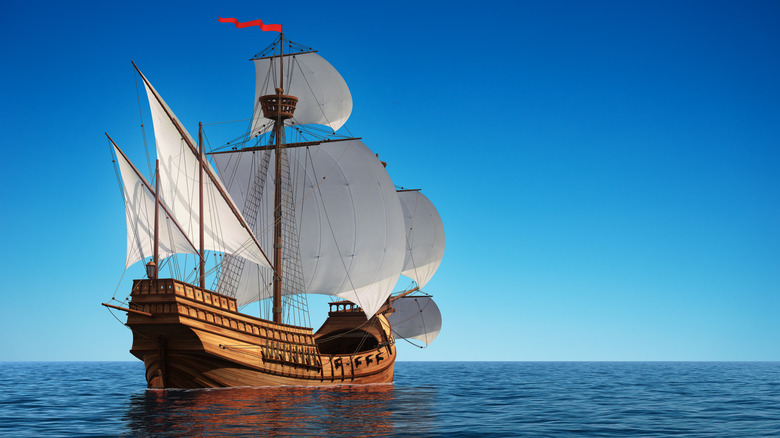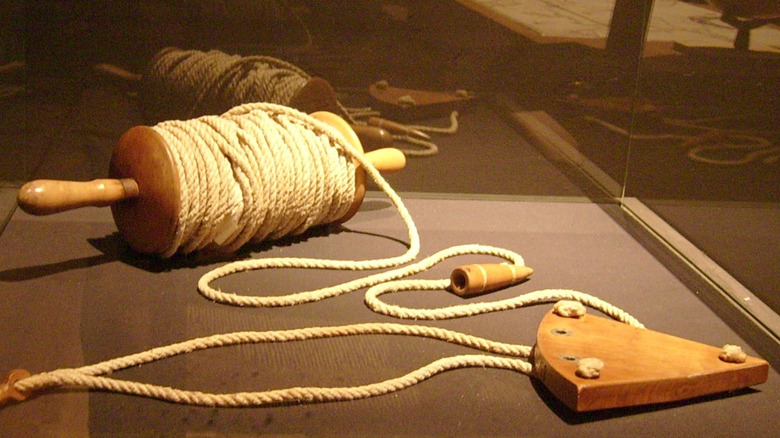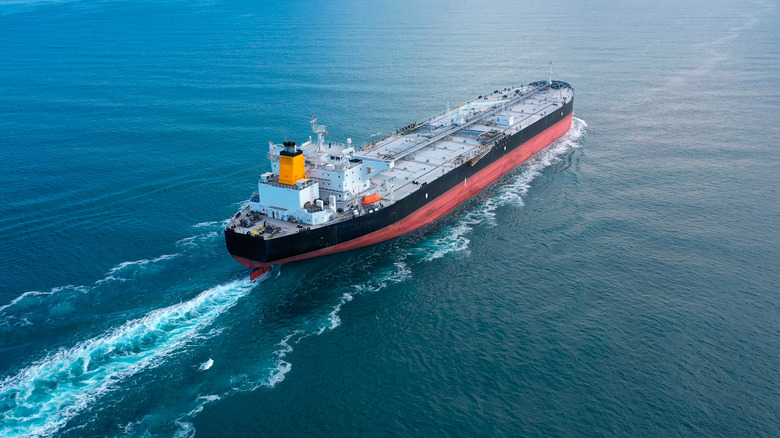Why Do Ships Measure Speed In Knots?
Here on land, the speed of a vehicle is recorded in either miles per hour or kilometers per hour. In either case, determining how fast you're moving on land is fairly simple because you can see landmarks in the distance and estimate how far and quickly you've moved from them. On the open ocean, though, there are often no such landmarks. This is why seafaring ships can't measure their speeds in miles or kilometers per hour.
In order to determine speed and distance while traversing open waters, ship crews use a different system made up of knots and nautical miles. A nautical mile is slightly longer than a single mile, being based on latitudinal and longitudinal coordinates. Of course, you can't see the circumference of the Earth from a boat, which is why knots exist to provide more immediate, understandable measurement. The term actually dates back hundreds of years, when ship speed was measured with a length of rope that had numerous knots tied into it.
The concept of knots dates back as early as the 15th century
There's a bit of disagreement as to when exactly the practice of measuring ship speed in knots officially came about, but broadly speaking, it was some time between the 15th and 17th centuries.
In these days, the lack of information available on the ocean made sea travel extremely dangerous and imprecise. Because sailors couldn't determine how fast they were going or how far they had traveled, it was difficult to know how long their provisions would last before reaching land. This is what led to frequent instances of starvation and illness like scurvy.
At some point, though, an enterprising sailor had an idea: if there are no landmarks on the ocean, why not make some? Using materials available on a boat, a simple system for measuring distance called the chip log was created. A long rope would be wrapped around a spool, ending with a wooden drag. This rope had numerous knots tied into it, precisely spaced at intervals of about 14.4 meters. On an officer's command, sailors would drop the end of the rope into the water from the stern and let it gradually lag behind. Using a sand timer, the officer would watch the line and call out whenever enough time had passed. However many knots in the rope had drifted away by the time the timer ran out would determine how fast the ship was moving, and how far.
A nautical mile is equivalent to 1.15 miles, or about 1.85 kilometers. The original 14.4 meter distance between knots in the rope, divided by a 30-second timer, was equivalent to a speed of 1.85 kilometers per hour. Ergo, 1 knot equals 1 nautical mile per hour.
Knots are calculated today using electronic equipment
The chip log was one of the most vital developments in the history of maritime travel. While we don't need to measure distance on the water with a rope anymore, knots have managed to persist as the dominant means of gauging speed on the water, in conjunction with nautical miles. Even the largest, most extravagant cruise ships still use knots. It took a little while for the system to reach mass adoption; it wasn't until the late 1920s that nautical miles were internationally standardized, and the United States wouldn't begin following that measurement until the 1950s.
Tools for measuring speed and distance on a boat are still known as "logs," but aren't actually made of wood. There are a few different kinds of logs, but the most common are electronic and pitometer logs. An electronic log measures the speed of the water current passing underneath the boat via a rotor-powered electric generator. A pitometer log works similarly, except instead of a generator, it uses a system of tubes facing forward and to the sides under the boat. When the boat is moving forward, the pressure in the forward tube increases and exceeds the pressure in the side tubes, the precise differential of which determines speed.
Fun fact, knots and nautical miles are also used for measuring speed and distance in airplanes. Commercial airline captains may get on the PA prior to a flight to tell everyone how many knots they'll be cruising at.


